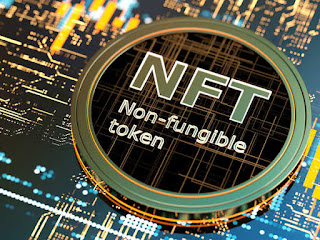What's an NFT?
Non-fungible tokens (NFT)
- A way to represent anything unique as an Ethereum-based asset.
- NFTs are giving more power to content creators than ever before.
- Powered by smart contracts on the Ethereum blockchain.
If Andy Warhol had been born in the late 90s, he probably would have minted Campbell's Soup as an NFT. It's only a matter of time before Kanye puts a run of Yeezys on Ethereum. And one day owning your car might be proved with an NFT.
What's an NFT?
NFTs are tokens that we can use to represent ownership of unique items. They let us tokenise things like art, collectibles, even real estate. They can only have one official owner at a time and they're secured by the Ethereum blockchain – no one can modify the record of ownership or copy/paste a new NFT into existence.
NFT stands for non-fungible token. Non-fungible is an economic term that you could use to describe things like your furniture, a song file, or your computer. These things are not interchangeable for other items because they have unique properties.
Fungible items, on the other hand, can be exchanged because their value defines them rather than their unique properties. For example, ETH or dollars are fungible because 1 ETH / $1 USD is exchangeable for another 1 ETH / $1 USD.
Adavanatges of NFT's
- NFTs are digitally unique, no two NFTs are the same.
- Every NFT must have an owner and this is of public record and easy for anyone to verify.
- NFTs are compatible with anything built using Ethereum. An NFT ticket for an event can be traded on every Ethereum marketplace, for an entirely different NFT. You could trade a piece of art for a ticket!
- Content creators can sell their work anywhere and can access a global market.
- Creators can retain ownership rights over their own work, and claim resale royalties directly
- Items can be used in surprising ways. For example, you can use digital artwork as collateral in a decentralised loan


Its very useful
ReplyDeletethanks for the support
Delete